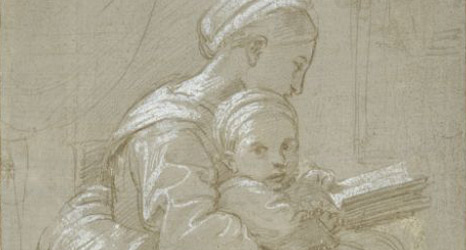I learned long ago, by hard experience, that when working en plein air, you need to be opportunistic and aware of what is happening around you. Somehow luck and timing often are part of the artistic process!
On a windswept hilltop overlooking wide Burgundy plateaux of ploughed fields and neat vineyards, I was deep into drawing a small goldpoint.Ii was trying to be mindful of Matisse's dictum: "one must always search for the desire of the line, where it wishes to enter or where to die away." That wisdom seems so appropriate when drawing in metalpoint, with the ability of the stylus to state its own terms about energetic moments and those when it fades away to a whisper.
I suddenly became aware of the roar of a mighty behemoth of a tractor approaching. I happened to be parked at the edge of a field of barley stubble, as I had become fascinated by the random patterns of the chaff and stubble half lying, half standing after the harvest. The tractor got closer and closer.
I was just trying to decide if I had finished the drawing or not when I glanced up. The monstrous machine was heading straight for my part of the field and the farmer atop his giant tractor was looking hard at me!
I hastily moved right out the way and waved my apologies to him. He nodded, lowered his plough, and before I could count to ten, my barley stubble was no more. Instead, rich russet soil was being churned up in powerful furrows, the first move in the every-renewing cycle of life in the farming world of cereal cultivation.
My timing was impeccable. There were no other fields left of cereal stubble visible anywhere. I had managed to find the last field to be ploughed. In essence, I had more than followed Matisse's idea of finding where the line wishes to enter or die away. The plough was the guiding factor! Or in other words, carpe diem works in art too!





















































